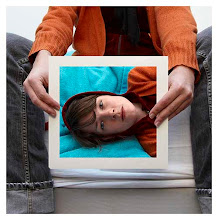
Ever since I was a kid I have believed in magic. All the stories I heard, the books I read and the films I saw spoke of more than just the physical, logical and actual. And though I never did learn to fly or developed any Jedi powers I still believe in magic, and it lives in fantasy and storytelling.
This series is inspired by storytellers, artists whose work momentarily help me forget that for the most part reality is devoid of magic. Photographs that both engage in questions of the realism of the record and the fiction of the set, and films that dwell in the realm of the internal, the fantastical and the uncanny.
This work comes from a lifelong fascination with the imaginary, and later also the use of art and media in relation to it. In some ways most of the research for this project was going on long before it begun in the form it is now. One of my aims has always been to create visual escapes for myself in some way. Fragments of an internal world made tangible through the photograph. The invisible made visible. Through more recent research I have been able to find artists that deal with similar subject matter to mine. And some have been of bigger influence than others.
Simen Johan is a Norwegian photographer who creates imaginary spaces through seamlessly compositing several digital images into single photographs. His body of work Evidence of things unseen (2000-2003) focuses on childhood fantasies and role-play while questioning the objectivity and (expected) accuracy of the photograph. One image in particular lingers on in my imagination. A boy on a red tricycle pulling a tied up, crazy looking circus monkey around in an industrial area at night. Is the monkey screaming? Is he angry or happy? Does he belong to a fortune-teller? (His little hat looks like that of an old school gypsy.) Why is he tied up? Where are they going? Why is such a small boy out late at night?
His work has inspired further thought on the construction of images and what technology has done to our relation to the photograph. His open-ended stories have been the source of some enjoyable escapism. They invite me to create my own narrative from the framework set up through the photograph. They engage on several levels, emotionally and intellectually. Similar to mine, key elements in his work are layering dualities, the imaginary and bizarre, and the exploration of the crossroad between the internal and the external.
Tom Chambers is another influence as a fellow explorer of the natural and the fabricated. Many of Chambers' images combine three main elements, children, nature and animals. Each image is a photomontage to express, according to Chambers, a fleeting mood with strong emotional currents. Again it is the bizarre, dreamlike and imaginary that attracts me to this work. The unreal has become part of reality. His photographs made me start thinking of how taxidermy could solve the issues with using animals, and what this adds to the mix. Apart from a lazy, sleeping dog once, my work has naturally been unsuccessful with live animals. They generally don’t appreciate being put in the spot light.
As well as photographic and theoretical research, a lot of my inspiration comes from films, and especially those of David Lynch. His use of chiaroscuro lighting to contrast the light and the dark to express dualities, his saturated colour palette and his dark, intense, psychological dramas. Lynch creates mysterious universes that remain in part unexplained, which makes every viewing different.
These artists, amongst others, have influenced me to think of ways to construct narrative photographs that visualize a borderland of inner and outer realities. Hybrids of the natural and the fabricated.
Overall it is their storytelling that inspire me the most. Spellbinding tales where the familiar meets the mysterious and magical. Invented melodramas exploring the unknown.
WebSites
http://www.simenjohan.com/
http://www.tomchambersphoto.com/
http://www.davidlynch.com/


